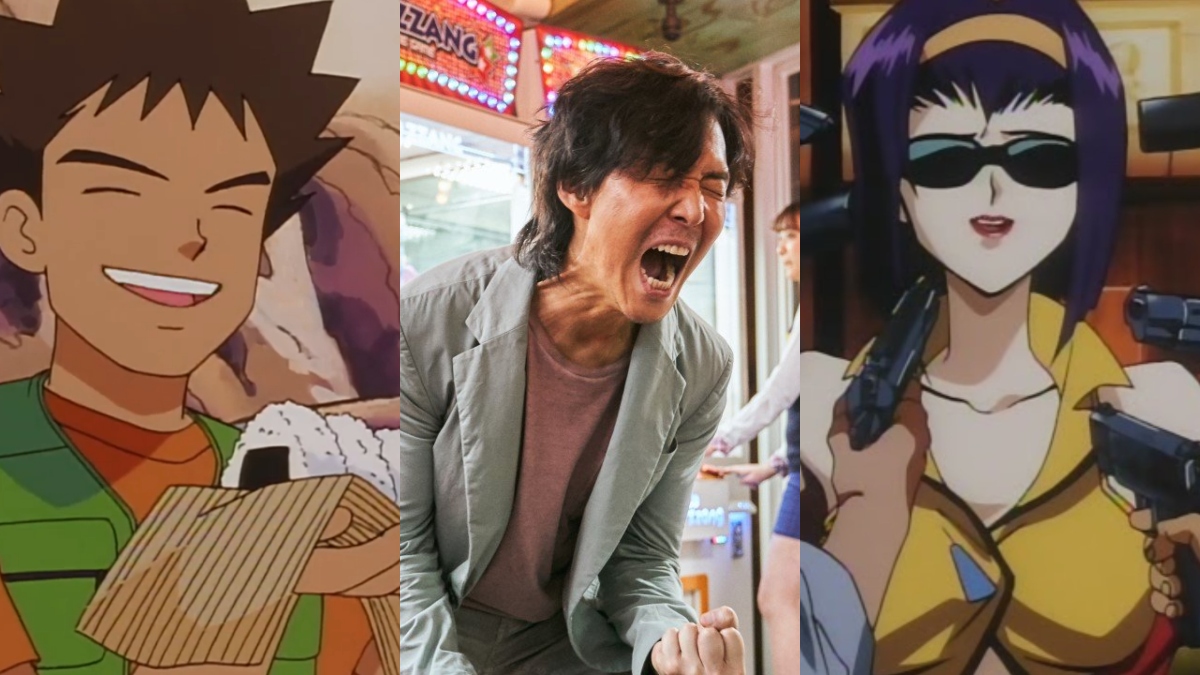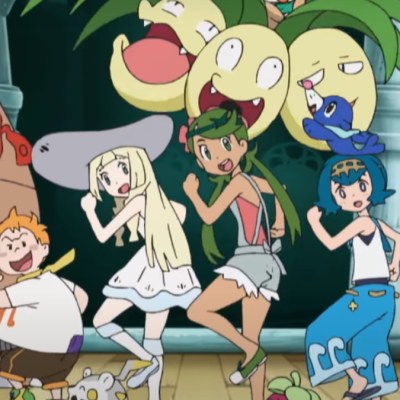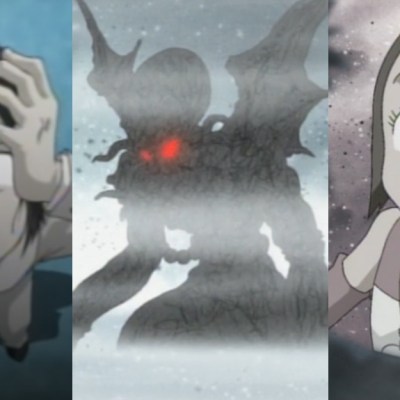If you venture into any part of the anime community, eventually you’ll come across a debate that has raged for decades.
Dubs v. subs.
The argument has been ongoing ever since anime first started gaining a large audience outside of Japan. Some prefer watching anime with an English dub. Others prefer watching the original Japanese audio with the aid of English subtitles. While to some this is merely a personal preference, the debate between the two camps can get extremely heated especially on the side of “sub purists.” To them, the only true way to experience anime is how it was “originally intended.” That if you’re watching the English dub you’re “lazy” or aren’t getting the “true experience.”
For a chunk of the earliest anime brought over to America, this was true. Many of the earliest dubs tossed out any notion of following the Japanese script in order to “Americanize” for western audiences. Names, characterization, and whole episodes would be changed. Gatchaman was turned into Battle of the Planets and added a character that never existed in the original version. An early dub of Captain Harlock featured the usually stoic hero cracking jokes and badly mixed audio to the point it was near impossible to understand the more comedic dub.
Jason DeMarco, SVP of anime and action series at WarnerMedia and Adult Swim, and the co-creator of the Toonami block on Cartoon Network which heavily featured anime, recalls that before the 2000s dubbing was much less regulated.
“There was less money usually to create a dub, there was often not much oversight from anyone how the dub was being created, what the performances were like or how accurate the translation was,” he says.
Imagine yourself as a fan in the ‘80s and ‘90s and one of the few legal sources you get anime from are dubs. You’re excited to finally see and understand a show you may have only seen photos of in magazines, you tune in to watch, and it sounds like it was acted by people who couldn’t even get parts doing local dinner theater. It’s no wonder fans grew hostile towards anime dubs and sought out subtitled versions when they could.
I get it. I grew up in the ‘90s and was first exposed to anime like Pokémon, Digimon, and Cardcaptors through Kids WB and Fox Kids. I enjoyed them a lot but as I got deeper into the anime scene and started collecting DVD’s I grew to prefer the subtitled versions because they were uncut. Watching shows I’d originally seen dubbed on TV was a totally different experience when watching the subtitled version. I couldn’t understand why anyone could watch a dub when a subtitled version was readily available. I turned into a snob about it, looking down my nose at “casuals” who’d only watch a show if it was dubbed.
But being a snob is no fun. Thankfully, nobody needs to be a snob anymore as over the past 20 years a dubbing renaissance has taken place. For the most part dubs are now extremely faithful to their original source material in part because many people working in the industry now grew up on anime and English dubs. They have a deep love for the material and want to put their all into it. That love is often a necessity because dubbing is not simple. It’s not just a matter of translating the dialogue exactly and simply doing a voiceover.
“You’re not just trying to convey the meaning of the scene and the literal translation of the dialogue, you’re also trying to match the lip flaps that were animated to a different language and you’re trying to make it seem naturalistic,” DeMarco says.
Matching lip flaps is extremely important to dubbing teams. No one wants anime to match the often-parodied stereotype of dubs being totally out of sync with the mouth movements of the Japanese characters. Doing that on top of making the dialogue flow naturally for an English speaking audience can be a huge challenge.
Marissa Lenti, voice director and writer for dubbing studio Sound Cadence shares an experience of when she was working on the dub of Kemono Friends, an anime series which follows anthropomorphized animals, and the tricky decisions that came with localizing Japanese dialogue. The show features a character named Serval who frequently exclaims “sugoi!” which can mean awesome or amazing or just an exclamation of coolness. The English speaking fan base for the series loved Serval saying “sugoi” and it was treated as if it was a catchphrase.
“The show didn’t intend for it to be a catchphrase but the fandom took it that way. It would be a disservice to the English and Japanese fandom not to give her a catchphrase.”
Lenti couldn’t just leave the phrase untranslated, as much as some fans would have loved it, because the show is meant for children. Having Serval simply say, “amazing!” wouldn’t have conveyed the same feeling so, since Serval is based on a real-life wild cat, Lenti translated “sugoi” to the delightful, “a-meow-zing.”
“The kids that I showed the episodes to really liked it and connected with it,” she remembers. “Thankfully the English speaking fandom liked it as well.”
Back in the early days of anime fandom a good amount of ire for dubs also stemmed from the fact subtitles weren’t readily available. You could only get dubs and even if a subtitled version was available it might cost more money. Now with the advent of DVDs and streaming, almost every dub available has a Japanese subtitled version right along with it.
Yet anti-dub sentiments still linger and a loud minority of fans still consider that watching an anime subtitled is the more pure experience. After all, you don’t have to worry about localization with subtitles as it’s just pure translation, right? Not exactly, according to DeMarco. In his views, some views are so invested in supposed “purity” of the sub that they miss a crucial detail.
“A subtitled version is still a translated version that somewhat changes the original. Dubbing is simply a different type of translated version that is not inherently less pure than the subtitled version. I don’t care what anyone says, unless you speak Japanese you’re not going to be able to tell which performance is better. If you go too far with it, you’re fetishizing another country’s culture. Japanese people and anime creators don’t consider you watching a dubbed version as you watching a worse version of the show.”
Sub purism also exists because some fans haven’t checked out any dubs since the early days of anime being brought over from Japan. It’s telling that the first dub of One Piece by 4Kids, which infamously swapped out a character’s trademark cigarette for a lollipop, is still brought up as a kind of dub boogie man, even though that dub is nearly 20 years old. A clip from Pokémon where a character refers to a rice ball as a jelly donut is still up for constant scorn as if it recently aired instead of it actually airing in 1998.
“The heart of this is a jumping at shadows situation,” Lenti says. However, she’s also quick to stress that if all you’ve seen were old unfaithful dubs of course you’d assume they’re all bad. “If they crack open 10 dubs and they all happen to be bad ones, fair enough. You’d think all movies were bad if you watched 10 and they were all the worst movies ever.”
Read more
Though dubs today are of a much higher standard, one of the best examples of an earlier anime dub is without question the YuYu Hakusho dub from the early 2000s. Extremely faithful for the time, the entire dub cast is a joy to listen to. Justin Cook brings a raw snark and energy to lead character Yusuke while still giving him a sensitive side. John Burgmeier as Kurama brings intensity and humor. Chuck Huber as Hiei is the perfect little demon who thinks he’s edgier than he really is. You also can’t forget Christopher Sabat whose turn as the comedic Kuwabara is a legendary performance, bringing the humor in a way not even the original Japanese actor could do. These English voices enhanced my enjoyment of the series, giving me a deeper appreciation for the characters and the world. Whenever I watch YuYu Hakusho, I always go for the dub. The same can be said for other dubs such as Cowboy Bebop and Dragon Ball Z. For a generation of viewers, the voices in these shows are the characters.
A good dub can also help keep you immersed in the story, which is especially important for animation where the visual language is key. You don’t have to split your attention between reading subtitles and understanding what’s visually going on in the show. For Brady Hartel, producer at anime home-media company Discotek, a dub can create a seamless experience for the viewer.
“Your attention is diverted when you’re watching subtitles. When you create a dub that is of a high quality, has good acting, is referencing the original, and gets across the same emotional beats you can enjoy it more. You can completely engross yourself with the show.”
Hartel points to an example of a subtitled show he worked on, the comedy anime Bobobo-bo Bo-bobo, where over 40,000 subtitles were needed to explain all the jokes and references. That’s not to say a hardcore fan wouldn’t want the explanations those subtitles bring, but it doesn’t exactly make for the most enjoyable experience where you may need to have several seconds to take in a joke in a show that’s supposed to be a comedy.
“Trying to come up with jokes that work in the subtitles was crazy,” Hartel says. “After going through over 50 episodes I understand why it hadn’t been subtitled before. It’s so dense with jokes that are almost untranslatable.”
Dubs also make anime more accessible and I mean that in a multitude of ways. There are some with vision, reading, or attention issues who aren’t able to take in subtitles as many of us can. Young children might not be able to experience anime if they didn’t have dubs (would you take away Pokémon from kids?!)
Also important is the wide reach that dubs afford anime. Some believe that anime could succeed on its own without dubs but that isn’t the case. For the wider television audience, dubs are needed to even get anime on the air. According to DeMarco, “the general rule still for broadcast television is people change the channel more when they see subtitles.”
As much as streaming has surged in popularity over the last few years, a good portion of the audience still might discover anime for the first time on traditional TV. It certainly happened with Cartoon Network’s Toonami block back in ‘90s and early 2000s which was a pioneer in bringing more faithful dubs to a wider audience and still is with many faithful dubs running as part of the Cartoon Network Adult Swim block.
Dubs can even help make anime easier to buy and thus more profitable. If an anime comes out on Blu-ray with a dub it’s far more likely to be sold at a chain store like Walmart because it’s more accessible. As Lenti lays out, “if you’re going to be selling (anime) in a primarily English speaking country, it’s got to be in English.”
Biggest of all, and this is the most contentious part of the sub v. dub debate, some people aren’t into reading subtitles. And that’s okay. Bong Joon-ho is ready to fight somebody but the truth is that some people don’t want to read. They don’t like to read. So what would you prefer? That someone never watches your favorite anime or live-action show/movie from Japan or elsewhere in the world, or they watch the dub? If watching the dub is the only way someone will watch Squid Game that is perfectly fine.
Also, as much as older dubs can have their issues? There’s a lot to love about them. Are they faithful? Not always, though they’re sometimes closer than fans give them credit for. But they can create a whole new experience.
Robotech, a source of endless disdain for sub purists, cut up three different anime series and merged them into one show. The result is a series with a dub that only partly resembles the originals but, I’d argue, creates something more special and rich than any of those three shows could on their own. When you get to the third saga of Robotech, which adapted Genesis Climber Mospeada, the actions of the group of rebels desperately trying to liberate Earth takes on more meaning when you add in the back-story from the previous two shows. Now it’s a world that’s been ravaged by two previous wars and the character’s journey takes on a whole new sense of meaning and desperation.
And let’s be honest, some early dubs are just fun to watch. Is the ‘90s dub of Sailor Moon faithful? No. Does it cut out huge chunks of the story and completely rewrite characters? Yes. Is it a blast to watch as long as you go in knowing that? Hell. Yes. The standout performance for me has always been Mary Long, who played Serena/Usagi’s best friend Naru/Molly. In the original series Naru was a sweet character that, as the show went on, largely faded into the background. In the dub, Molly has a distinct Brooklyn accent that makes her stand out long after she’s no longer in the show. She makes Molly larger than life, imbuing her with more character and fun while still being able to play heartache in Molly’s big season 1 arc. I mean really, listen to this performance. It’ll bring a smile to your face, trust me.
There’s also the greatest burn in all of television history when, in that same Sailor Moon dub, Sailor Mercury tells a villain to, “go bleach your roots, creep!” Iconic.
Discotek releases a steady stream of anime with classic dubs included and Hartel says that, “while it’s not 100% faithful it’s still very entertaining. We want to preserve that experience and it’s also preserving history.”
“The good localized kids dubs from that era have so much style and flavor and quotability and you just remember them,” Lenti adds. “If something is too paint-by-numbers and too by the book it’s easy to forget about it.”
Lenti stresses that the original creators of anime, “did not intend for these characters to speak like Google Translate. They intended for you to quote the characters and love the characters and remember the characters. If you can make the show memorable, go for it, as long as you don’t go too far over the line. You don’t remember the perfectly translated line from episode 25. You remember the catchphrases, the funny jokes, and the iconic voices.”
That’s what is so great about dubs, faithful for not. They can take a show or movie you already loved and let you experience it again for the first time. And if all you’ve ever watched is the dub, you can check out the subs and get a whole new experience there too. Even more so now that dubs and subs are given equal weight by many companies.
“Going forward, any Adult Swim anime are designed so that the dub and sub will release at the same time,” says DeMarco. “People have the option to choose whichever one they want.”
It’s rare that we can get two different versions of something we love but that’s the power of dubs. Of course not every new dub is great but, as Lenti puts it, “There’s no possible way all anime dubs are good. Dubs are just like cartoons, just like video games, they are entertainment products, and therefore have the possibility to be bad or mediocre. Also, if a show is middle-of-the-road and a lot of people don’t remember it? Most people are not going to remember if the dub was good or bad either.”
Still, on the whole dubs are far better than they used to be and Hartel chalks a lot of this up to the fact the world is more globalized now. “We’re in an age now where there’s not the need to change a lot of stuff because people expect it. People appreciate different cultures more.”
So hey, the next time you’re flipping through Netflix or get your newest anime Blu-ray? Give the dub a chance. You might find something new and fun and if you don’t like it? The subbed version is almost always there. We live in the future, let’s stop critiquing how people enjoy media and spend more time focused on celebrating the media we love.


